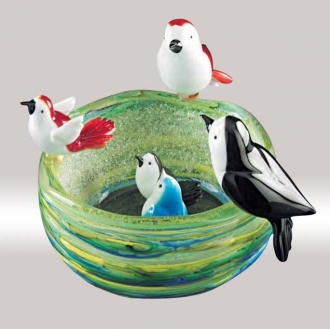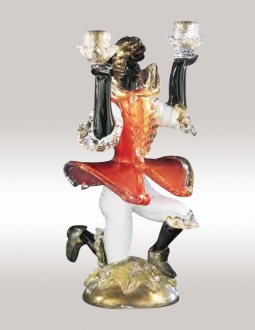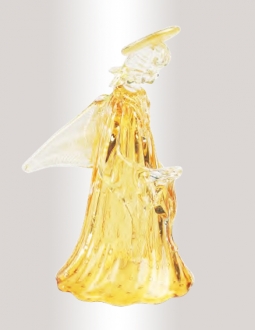Murano Glass Gifts
- All Shops
- Murano Glass Gifts
- Amazing Music Boxes
- Beer Steins
- Limoges Factory
- Gift Guide
- Walking Canes
- Gifts
Making of the Murano Glass
Murano Island in Venice is the glass capital of the world. The glass art that has originated on the Island of Murano is inimitable. You can make glass articles in the Murano style but it does not become Murano glass. The technique of this is the special heritage of this island and they jealously guarded the secret through centuries. Even if, by the 18th century some of the techniques were leaked out by mercenaries, the original techniques of the art are still intact with the Muranese.
The Murano glass goes through various stages before a perfect art piece is produced. The first stage is melting the required type of sand in a furnace. It is done in a refractive urn in a furnace that is heated to incredibly high temperatures of 1200 to1400 degree celsius. The composition of minerals is decided by the factories and its masters.
This molten minerals form liquid glass. The liquid glass is stirred thoroughly and the colors are often added at this stage. But this liquid is not viscous enough to form any shape. For that, it has to be brought to lower temperatures like 800 degree celsius. At this temperature the glass becomes sufficiently viscous and elastic to be blown into shapes.
The next stage is called ‘evare’. The ‘servente’ or servants of the masters insert the rolling pipes into this liquid and take out a portion of it for the masters to blow. They roll the pipe once to remove the excess glass till a bubble like glass liquid sticks to the pipe. At this stage more decorative objects are added to this bubble, so that when it is blown into objects they will be adorned with these decorative materials like Murrine.
The masters blow this and manipulate the molten glass to form different shapes. The shaping process of the articles is called ‘pontello’. The assistants are there to help him in the process. They use molten glass to attach a rod or ‘pontil’ to the base of the article, so that it can be held conveniently and the master can shape the piece.
The glass has to be reheated several times before a shape is formed. The number of times the glass is reheated depends on the article that is being made and the expertise of the masters. A skilled master artisan can make a piece at one heating.
The masters use many types of tools for the shaping. Some of the tools are made of pear wood and these tools are made by specialists. The other tools like scissors, tongs and pliers are made of metal. These metal articles also are made by specialists.
When the master finishes his work, the completed article is left in another furnace to subject it to slow cooling, so that it becomes tough without cracking. This process is termed as ‘tempera’. It is then kept on a bed of sand to complete the cooling.
The last stage of the craft is done on the articles that are cooled to room temperature. It involves grinding to create the required shapes and marks appropriate to each shape. The machinery used for this purpose consists of a number of stone wheels of various sizes. This process also helps to remove any unwanted protrusions or unevenness. It makes the object more polished and perfect. This process on the cold glass is called ‘moleria’.
This is how a Murano glass object is made. The last phase of the process is given more importance in the modern Murano glass art.
by Marina Chernyak




